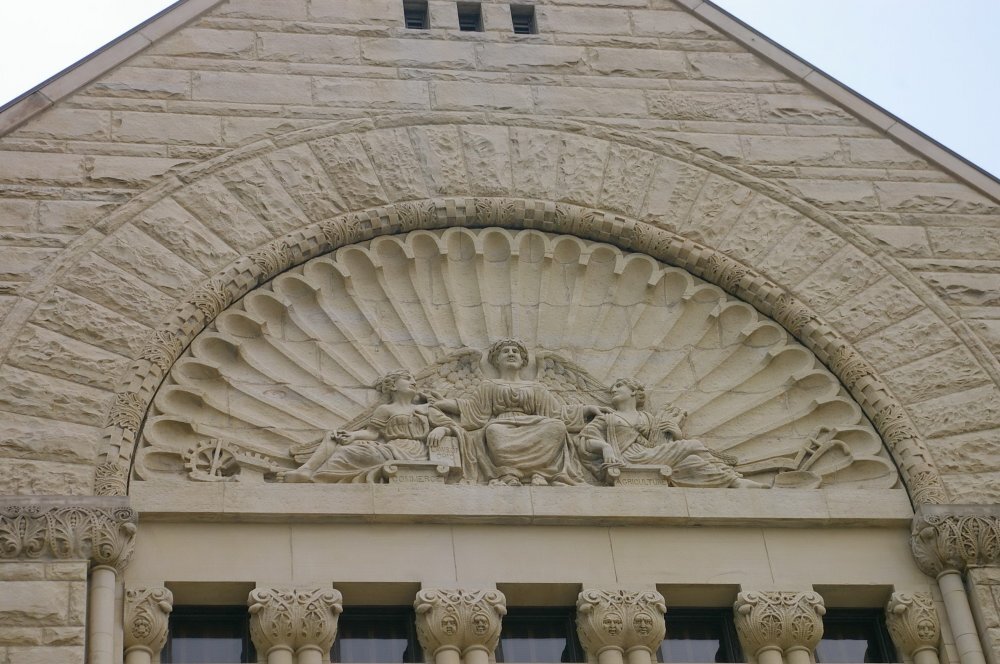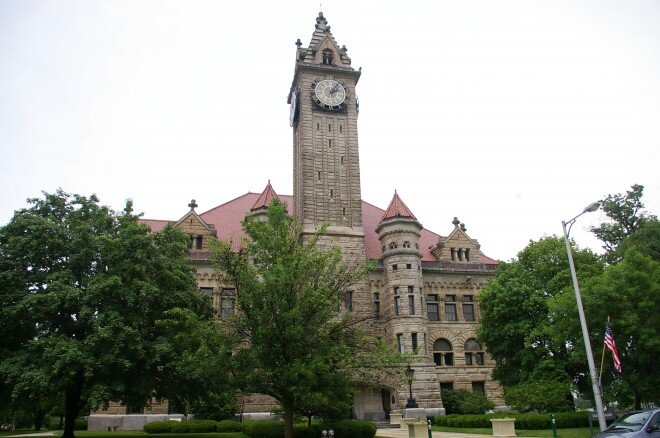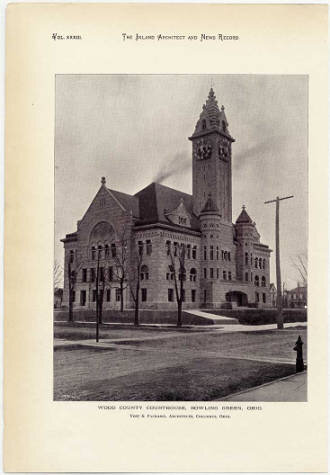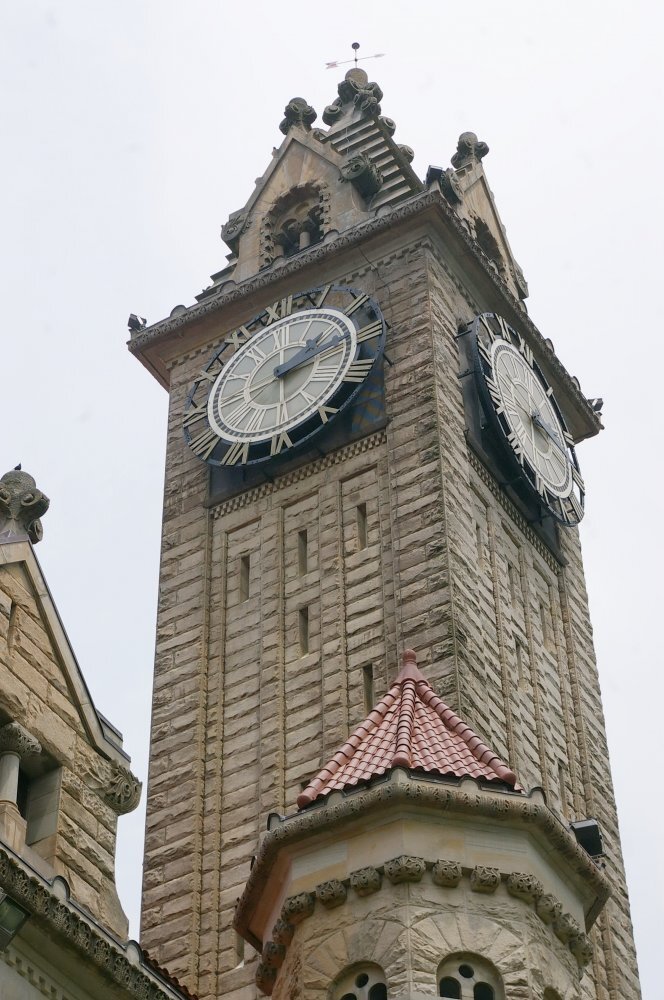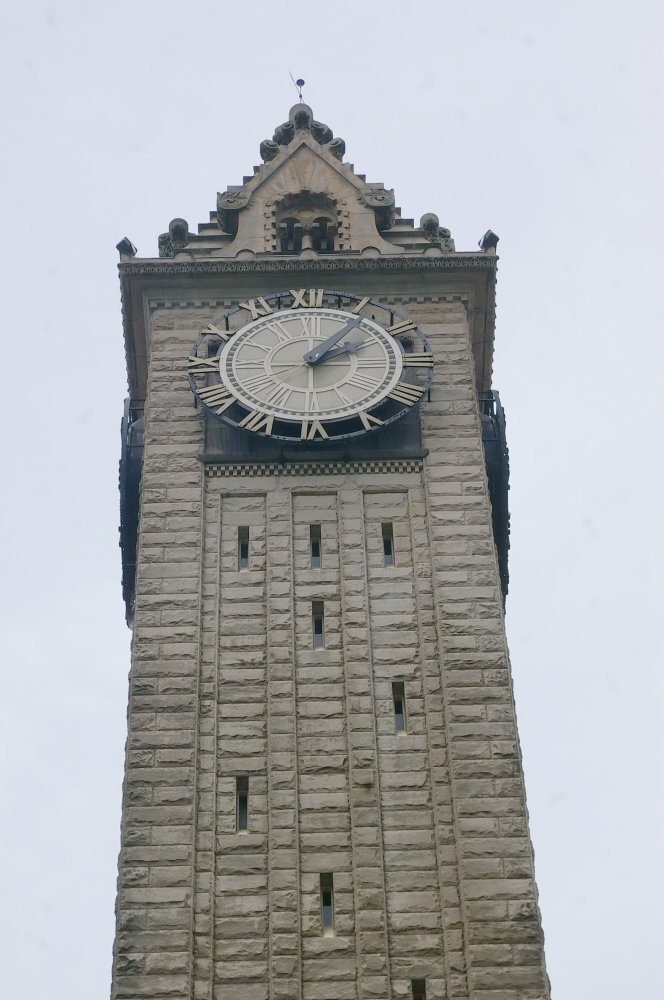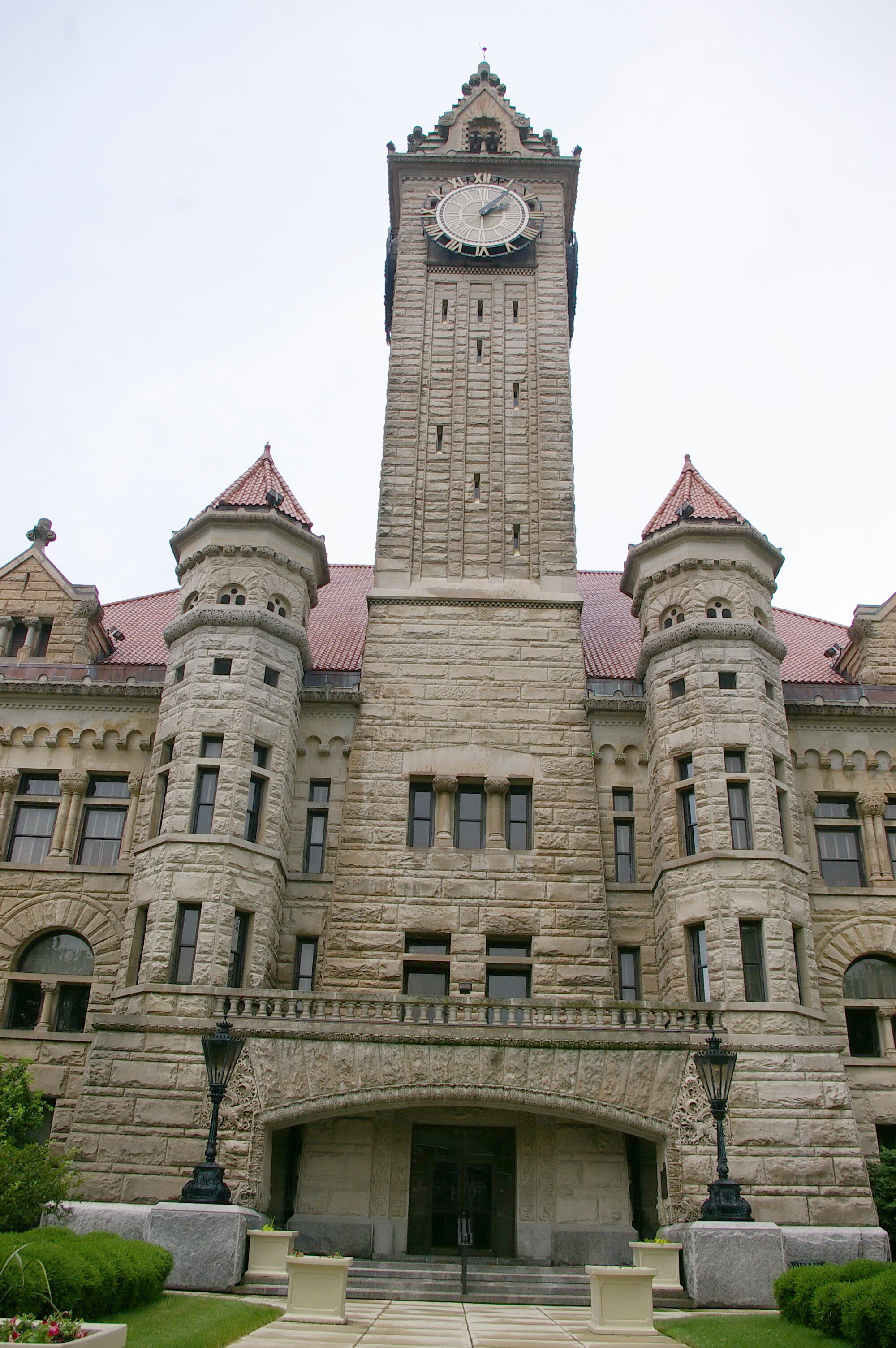Wood County Courthouse
Bowling Green, Ohio
Date: 1893 – 1896
Address: 1 Courthouse Square / Court Street
Style: Richardsonian Romanesque
Architect: Yost & Packard
Contractor: T B Townsend, Zanesville
Cost: $255,746
The building faces south and is a three story Amherst sandstone, Vermont granite and marble structure. A high square stone tower rises 195 feet with large clock. On the north side is the modern five story County Administration Building.
Listed on the National Register of Historic Places; in an Historic District
Historical Photos of Wood County Courthouse
The establishment of the Ohio Reform Farm (or Boys Industrial School) was authorized by the Ohio General Assembly on April 7, 1856. A law enacted April 17, 1857, outlined in detail the organization of the institution. Located on 1,170 acres five miles south of Lancaster, Ohio, the Ohio Reform Farm was the first institution in the United States to be operated on the "Cottage" or "family" plan rather than the "big-house" system. According to the AsylumProjects.org website, "the Cottage Plan (also known as the colony plan in England) is a style of asylum planning that gained popularity at the very end of the 19th century. Each "family" of 40 boys, who ranged in age from ten to eighteen, was supervised by an “Elder Brother.” The Boys Industrial School was governed by a Board of Commissioners until 1911. At that time, control was given to the newly created Ohio Board of Administration, which in turn created a Bureau of Juvenile Research in 1913 to “test, examine, and evaluate delinquent juveniles entrusted to its care.”
In 1921, this bureau was transferred to the Ohio Department of Public Welfare. The Ohio Department of Mental Hygiene and Correction began overseeing the Boys’ Industrial School in 1954. In 1963, the Ohio Youth Commission was created and assumed control of the Boys' Industrial School. Comedian Bob Hope spent some time at the Boy's Industrial School as a child. As an adult, Hope donated sizable sums of money to the institution. The institution ceased to operate as a juvenile reformatory in July 1980. The campus was converted to a medium security prison (Southeastern Correctional Institution) for adult offenders under the supervision of the Ohio Department of Rehabilitation and Correction.
